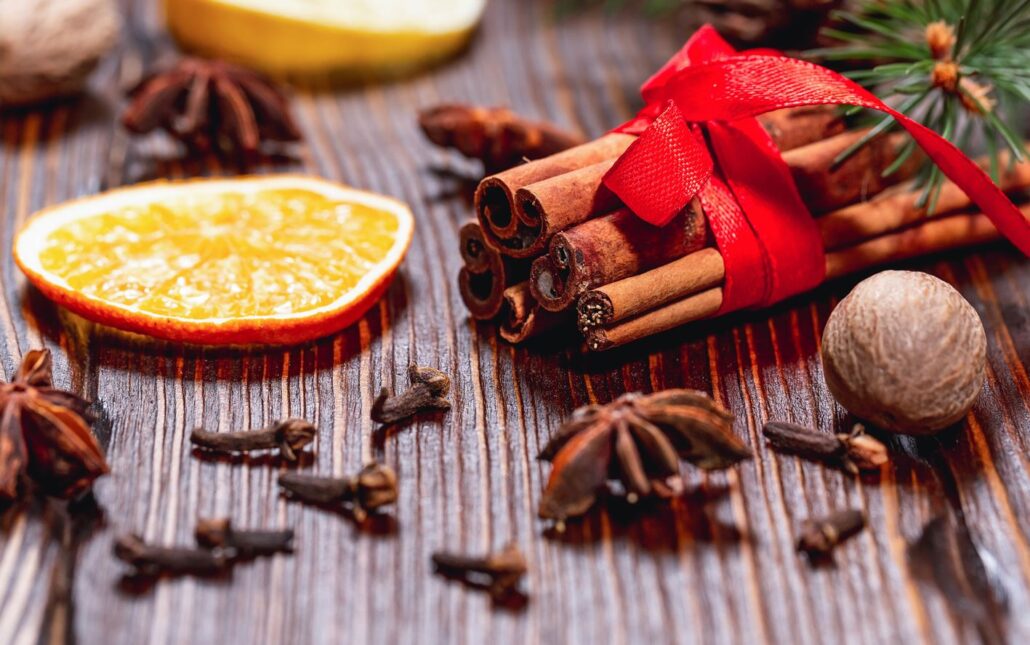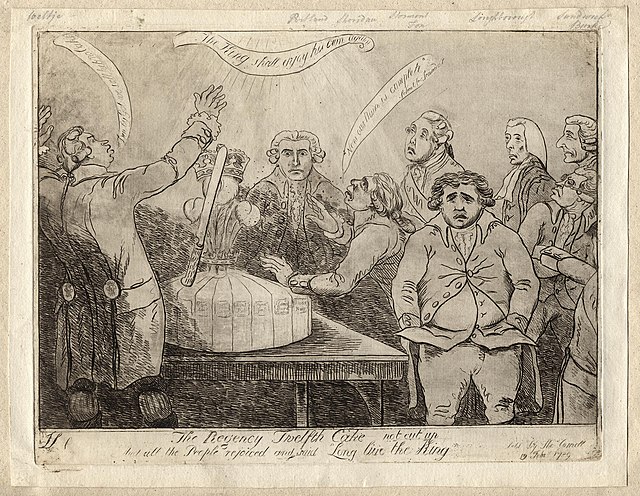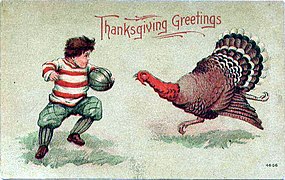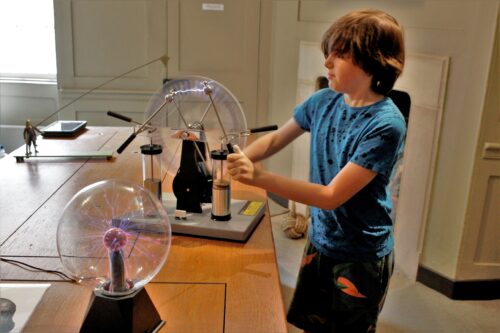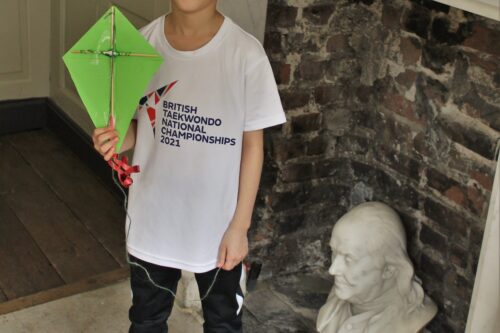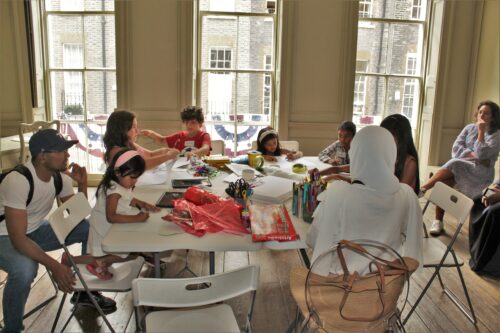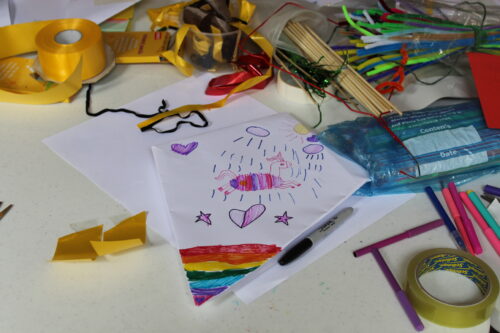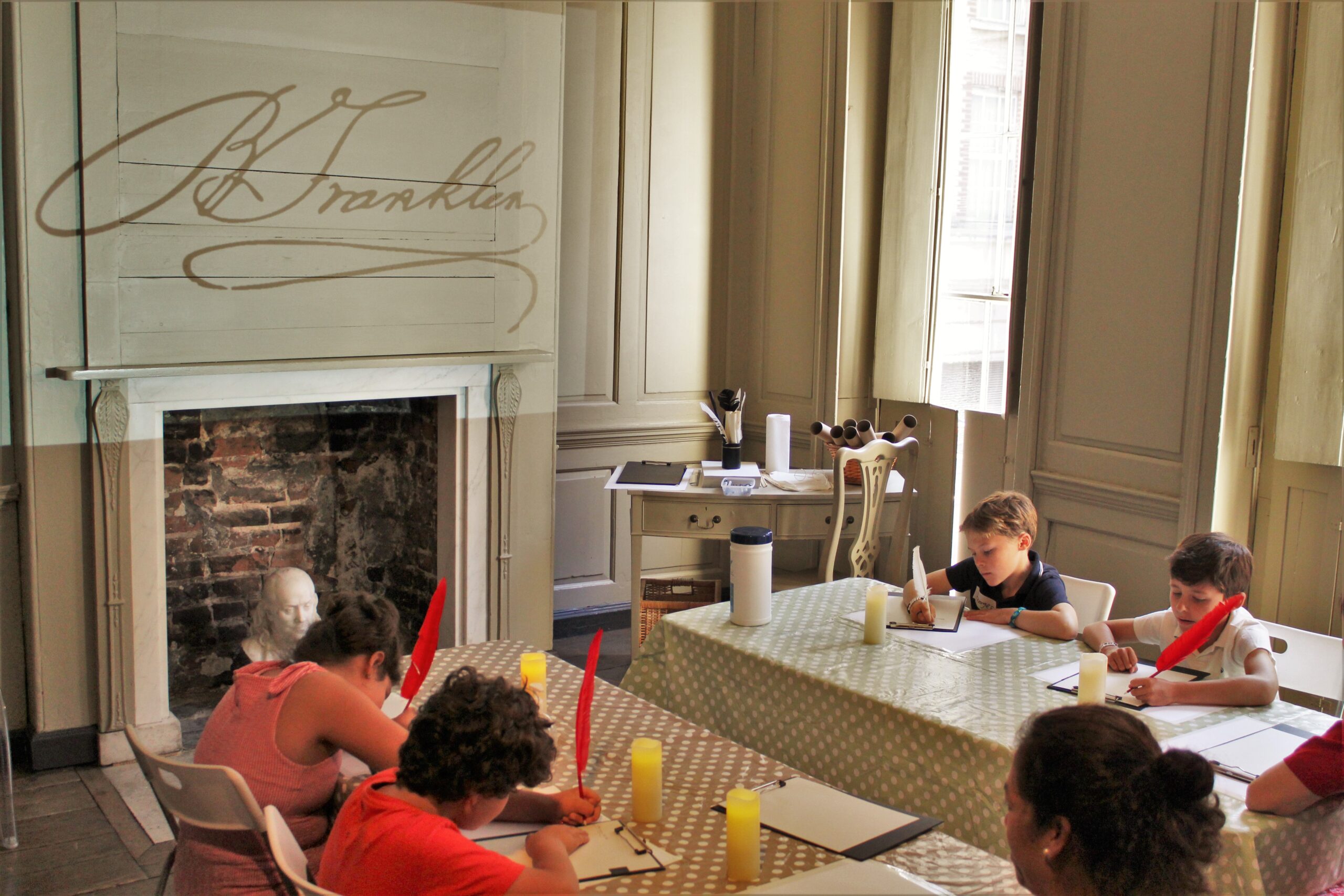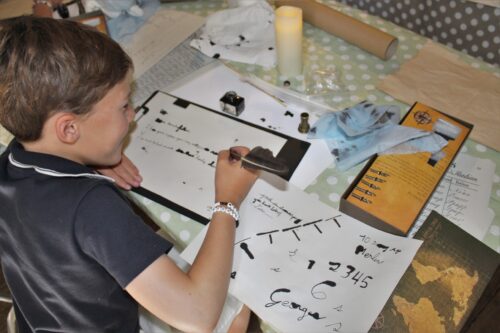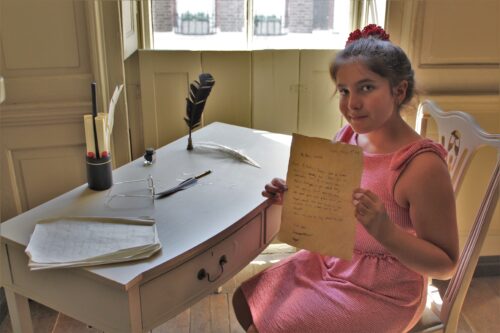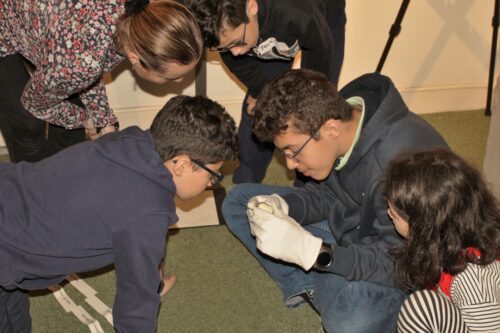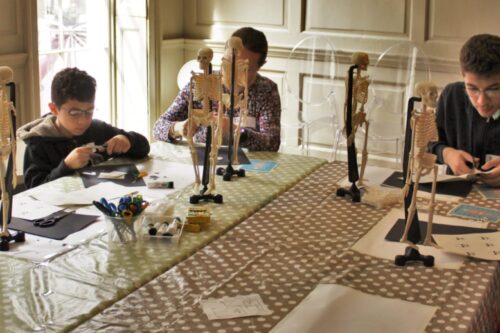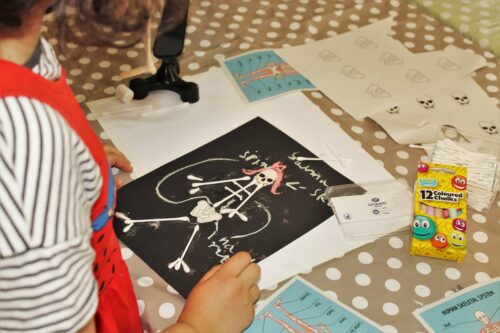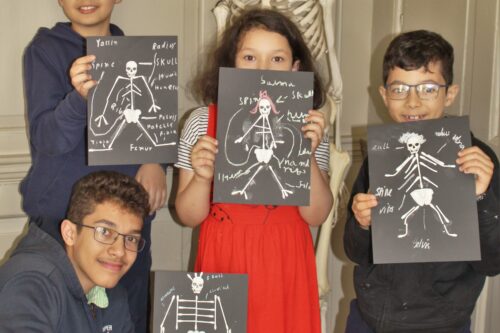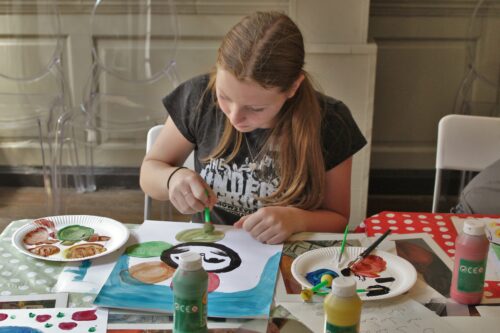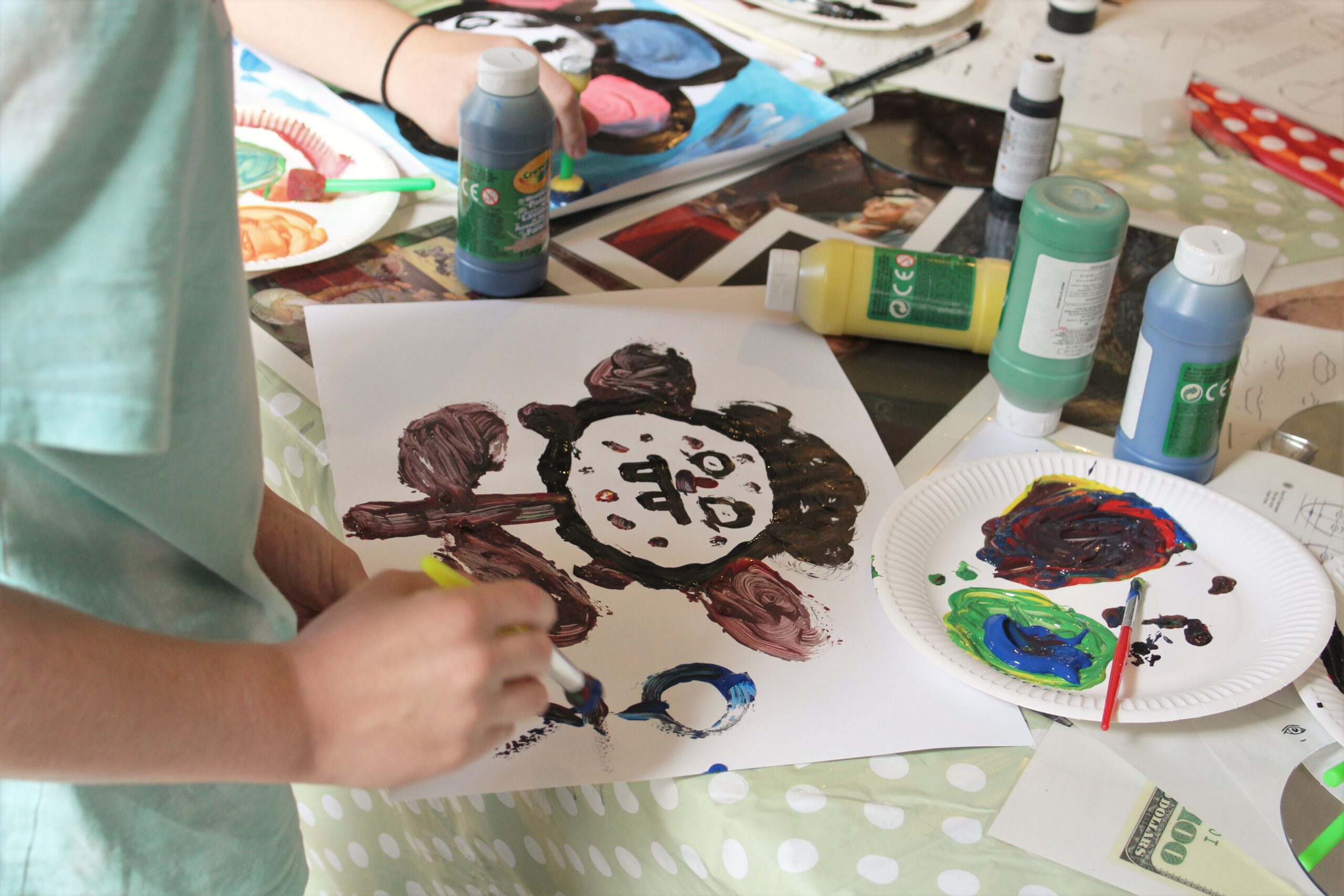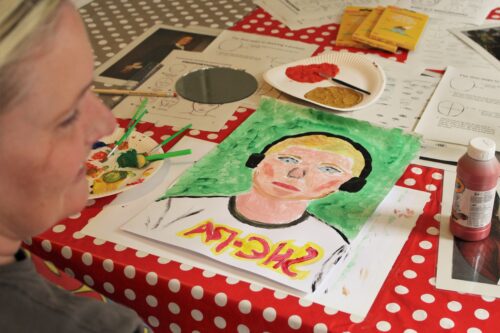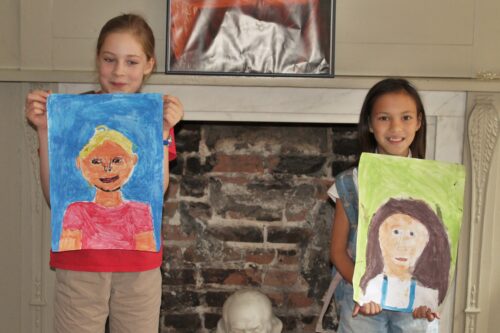Yeading Infant School Outreach Workshop: Inside Benjamin Franklin’s House
Ben’s Birthday Bash!
eGazette – December 2022
Please click HERE to read our newsletter from October-December 2022!
Family & Education Events Calendar 2023
Our 2023 Event Calendar is here!
Throughout the year, Benjamin Franklin House hosts a wide variety of fun-filled family events for all to enjoy!
View/Download a PDF of our calendar: Education Events Calendar 2023
Join us as we celebrate the major holidays such as Easter, Halloween and Christmas with an 18th century twist.
We also celebrate some of the biggest US holidays of the year with celebration events for the 4th July and Thanksgiving.
In May, we will also be holding a special Coronation Celebration as part of the city-wide celebrations for the coronation of King Charles III. At Benjamin Franklin House, we will look back at the coronation of King George III, an event that Franklin was able to attend in person, as well as some other famous kings and queens of England from the past 1000 years of history!
Our new afterschool Science Club will also be kicking off in January, with monthly sessions until July. Each session will focus on a different topic in the KS2/3 Science curriculum including Electricity, Forces, the Human Body and Sound.
Finally, our Summer Season of Family Events will return in August with a weekly series of fun workshops that explore skills in Calligraphy, Archaeology and Portraiture.
Please note: Booking for each event will open roughly one month in advance. Specific dates for TBC events will be released roughly two months in advance.
View/Download a PDF of our calendar: Education Events Calendar 2023
Parties, Cakes & Mistletoe: A Georgian Christmas
“A good conscience is a continual Christmas” – Benjamin Franklin
Read on as we explore the Georgian Christmas practices of holiday cakes, large parties, mistletoe décor, and other beloved Christmas traditions that Benjamin Franklin and the residents of 36 Craven Street likely enjoyed.
How did Benjamin Franklin and the residents of 36 Craven Street celebrate the Christmas season?
After Christmas’s banishment from English society in 1644 by Lord Protector Oliver Cromwell, Christmas did not regain its place as one of the most beloved holidays in English society until the Georgian and Victorian eras. Georgian Christmas was a time of balls, parties, courtship, and family gatherings that stretched from December 6th (St Nicholas Day) to January 6th (Twelfth Night).
English gentry spent their Christmas season in country estates and houses, while the rest of English society enjoyed a day from work as Christmas was a national holiday. Christmas day would be spent at church before indulging in a lavish or hearty Christmas meal full of traditional foods. Typically Christmas meals served goose, turkey, or venison depending on social class and financial status followed by a Christmas pudding, mimicking King George I’s first Christmas dinner which served plum pudding in 1714. Mince Pies would accompany the Christmas meal but, unlike today, these would be semi-savoury and made from ground meat, normally beef or tongue, with sweet currants.
On the 26th, St Stephen’s Day, the staff would have the day off whilst the household would recover from the food and drinks. People would donate to charity and the upper classes would gift their staff Christmas Boxes, which is where the term Boxing Day comes from (first used in the 1830s).
Decorating for Georgian Christmastime
All social classes would decorate their homes with traditional decorations such as evergreens, fruits and ribbons. This was not done until Christmas Eve, however, because it was considered unlucky to decorate before then. Kissing boughs and balls were also popular, usually made from holly, ivy, mistletoe and rosemary and decorated with spices, apples, oranges, candles or ribbons. In very religious households, families did not use mistletoe due to its scandalous connotations!
A cosy fire was an important component of Georgian Christmas. A Yule log, chosen on Christmas Eve and wrapped in hazel twigs was dragged home by horse to burn in the fireplace for the 12 days of Christmas. It would be put out on the first Monday after the Twelfth Night, also called Plough Monday, for good luck in the New Year. A piece of the log would be kept back to light again the following Christmas.
Nowadays, however, most households have chocolate Yule logs rather than wood. We’re not complaining!
Twelfth Night Christmas Celebration
January 6th or Twelfth Night signalled the end of the Christmas season and was celebrated by a Twelfth Night party with party games, dancing, drinking and eating.
The Twelfth Cake, which gave rise to today’s Christmas cake, was the highlight of the party and a slice was given to all members of the household. Traditionally, it contained both a dried bean and a dried pea to elect a man as king for the night, and a woman as queen. In wealthy households, staff would generously also be offered a piece of the Twelfth Cake.
The Twelfth night would also include Wassailing – a hot, mulled punch. Wassailing dates back to the Anglo-Saxon era and has evolved over the years.
There were different types of Wassailing, depending on location and social class. For wealthy households, a Wassail bowl would be passed around guests for everyone to take a sip and toast the next person. From the 1600s, poor households would take a Wassail bowl containing a mulled ale drink known as Lamb’s Wool around the streets. People would be offered a drink in exchange for money. From the late 16th century, Wassailing in some regions would incorporate a visit to an orchard with song and dance underneath the trees to wake them and encourage them to produce a good crop the next year.
After the Twelfth Night celebration, families took down all the decorations and burned all the greenery to avoid bad luck in the New Year. Even today, many people superstitiously take down all their Christmas decorations before 6th January.
Plough Monday (the first Monday after the Twelfth Night) was more commonly celebrated in agricultural areas. Farm labourers would paint their faces black with soot and pull a decorated plough around the more affluent houses in their local villages in exchange for money.
Where’s our month-long holiday?!
The extended Christmas season disappeared after the Regency period by the rise of the Industrial Revolution and the decline of the rural life. Employers needed workers to continue working throughout the holiday season, creating the shortened Christmas period of today. Tragic.
To learn more about Georgian Christmas here at Craven Street, join our free, Virtual Talk: Christmas at Craven Street on Wednesday 14 December 2022 – 5pm GMT/12pm ET!
The History of Thanksgiving: An Introduction
Alice Hopkinson explores the history of Thanksgiving and challenges us to rethink the accepted narrative.
Last year marked the 400th anniversary of the ‘First Thanksgiving’ of 1621, something that holds a deep, traditional meaning, and has become enshrined in the American cultural conscience. Since George Washington’s first Thanksgiving Proclamation of 1789, Presidents have used the holiday to convey ideals that lie outside the sphere of traditional religiosity and notions of simply ‘giving thanks’ for a bountiful harvest. Proceeding years saw successive Presidents devote their attention towards reaffirming the values of the Founding American Republic, discussing events of the previous year or addressing broader issues affecting the Nation. Whilst this is certainly indicative of a progressing American cultural identity, it is emblematic of Thanksgiving finding its own origin for tradition and subsequently evolving into something far greater and disparate from what it meant at its conception.
Thanksgiving has developed from a solemn and simple Colonial observance of thanks into an enterprising celebration that encompasses a variety of values, yet holds a far more sinister meaning for the Native American people supposedly crucial to its founding legend.
The ‘First Thanksgiving’ at Plymouth
Those who first settled in the Massachusetts Bay area were those who retreated from England following indignation and persecution for their religious practices. As a somewhat more extreme derivative group of Puritans, the Pilgrims sought to deviate from the practise of religion that had been reformed under King James I, and were therefore at severe risk of persecution if they were to remain in England. Fleeing to the New World in search of religious freedom, the Pilgrims landed at Plymouth Rock and on Native Wampanoag territory- something that is frequently omitted from contemporary retellings.
Famine and disease had been rampant throughout the voyage, with these poor conditions only becoming worse as the Pilgrims struggled to provide for themselves and build a self-sustaining settlement in this new environment. After a particularly tough winter the Pilgrims received invaluable guidance and assistance from the Wampanoag tribe, who graciously taught the settlers how to live off the land. It is at this instance that the ‘myth’ around the story of the first Thanksgiving becomes increasingly prevalent. The Pilgrims in return thanked the Wampanoag people and, with the first harvest produced, held a dinner to acknowledge their kindness, enshrining in tradition the act of holding a celebration of thanks for instances of recognising gratitude.

Is this the whole story?
In reality, the peace between the settlers and Native Americans was short lived. Relations between the two groups quickly deteriorated and tensions became more aggravated, particularly with the rapid expansion of European settlements and the vast influx of migration that occurred from the 1630s. As a result, Native Americans were forced out of land that had once been theirs and have since been subject to rampant cultural erasure. This highlights the stark contrast between the seemingly peaceful relationship between the Pilgrims and Native Americans seen in portrayals of the ‘First Thanksgiving’, and the more sinister reality.
The origin of tradition
Despite the 1621 Thanksgiving being famously recognised as the ‘first’, it is important to acknowledge that the tradition of giving thanks was a precedent that long predated the 1620 Mayflower voyage, and something that was essentially imported by the European settlers. Colonists observed thanksgivings regularly and even sustained this practice through the Revolutionary era, observing the celebrations for bountiful harvests, victory in battle or for acts of seemingly divine benevolence that had transpired.
Thanksgiving as a holiday
With George Washington’s 1789 Thanksgiving Proclamation offering gratitude for the recent ratification of the Constitution, formation of the American Republic and preservation of “safety and happiness… for the civil and religious liberty with which we are blessed”, it became possible to acknowledge the shift in meaning of Thanksgiving as a designated holiday held in the public conscience. Whilst Washington does acknowledge the religious sentiments of the occasion and gives thanks for fortune in harvest, he uses similar language to that found in the Declaration of Independence and Constitution, and spends the majority of his Proclamation affirming the founding values of the Republic- going to great lengths to ensure the people maintain the values enshrined in the nation’s founding documents.
Presidents since Washington have used Thanksgiving as a means to address the nation in a manner that is somewhat more informal than through official Proclamations or speeches. In each Proclamation, traditional religious values are consistently affirmed, as is the notion of giving thanks to God for the fortunes of the nation. However, each address is unique to the President and is in many ways a way in which to trace the narrative of American history in accordance with the fundamental issues concerning the nation. Last year President Biden marked the 400th anniversary of the ‘First Thanksgiving’ by acknowledging the “generosity and support of the Wampanoag” and compared their actions to those who have dedicated their time to fighting the COVID-19 pandemic. A very topical Proclamation, it is one that dedicates itself more to reaffirming familial and traditional values as opposed to those of the nation and Founding Fathers- fitting, considering the context in which it was written.
Contemporary meaning
Culturally, Thanksgiving has shed much of its religious sentiment in recent years and has become almost unrecognisable from its origin. Maintaining its association to harvests, it has become more familial, with it being tradition for many families to hold a Thanksgiving dinner that incorporates much of the food typically found on the North American continent, the turkey being the most pertinent example of such.
Furthermore, it has evolved to accommodate America as a consumerist nation that thrives on business and a booming economy, with contemporary traditions such as the Macy’s Day Parade, American football games and the amusing White House turkey pardon being the focus of attention throughout the country.
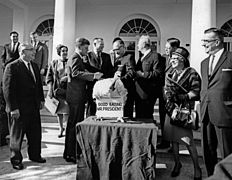

These new and emerging customs demonstrate how Thanksgiving as a cultural tradition has taken on a new meaning that has adapted and evolved in line with the changing American people. Yet aside from the jubilations brought on by the holiday, it is paramount to bear in mind that these traditions exist only for some. Many Native Americans choose not to celebrate Thanksgiving, serving as a reminder that a whole representative body has been practically omitted from the mainstream teaching of Thanksgiving. This highlights the importance of preserving these narratives.
To hear a continuation of this discussion, join us on November 25 2022, 5pm GMT/12pm BST.
Author: Alice Hopkinson
House Highlights: Summer Break @ Ben’s House
Here are some of the highlights from our incredible summer season of family events at Benjamin Franklin House!
Over the month of August we held a number of events as part of our Summer Break @ Ben’s House programme. We learned all about Benjamin Franklin, 36 Craven Street and Georgian Britain as well as getting creative with lots of arts and crafts activities.
In our first week we recreated Franklin’s famous Key and Kite experiment using a Tesla Coil in our Student Science Centre. We each got an opportunity to create a bolt of electricity using our Windhurst Machine before heading down to Franklin’s Parlour to build some decorative kites!
Our second week focussed on the art of calligraphy and the importance of letters in 18th century communication. We deciphered one of Franklin’s own letters before writing our own using dip pens and ink. The workshop was certainly the messiest of them all with inky fingers all round! We also created our own parchment paper with some good old fashioned tea-staining.
The focus of our third week moved away from Franklin and on to one of our other famous residents, the anatomist William Hewson, who lived in the House from 1770-1774. We learned about the anatomy school once located in the House and examined our collection of bones that were unearthed in our basement. We then became archaeologists for the day and explored our collection of archaeology tools and artefacts. To end the session we built model skeletons before creating our own skeleton diagrams using cotton wool buds and glue!
The final week of Summer Break @ Ben’s House explored the history of portraiture and saw us learn some valuable skills in art history. We deciphered the symbols in several famous portraits from history before examining a collection of Franklin portraits to learn more about the man behind the canvass. We then got our paint pallets out to create portraits of ourselves to take home and frame for all to see!
Children’s Summer Fair 2022
This year, Benjamin Franklin House is collaborating with the William Morris Society and Fulham Palace for an exciting Children’s Summer Fair to end the Summer Holidays!
Join us on Saturday 27th August for an exiting day of family friendly activities.
Get stuck in with the range of activities on offer:
- The William Morris Society will be getting inspired by our latest exhibition on May Morris by recreating her Orange Tree in 3D form and creating beautiful tissue paper flowers.
- Benjamin Franklin House will be exploring letters from the past with the chance to write your own 18th century letters using quills, ink and parchment!
- Fulham Palace will be bringing along some mystery objects from the past. Get curious and guess what they are, who used them, and when and where you think they come from. Complete with a chance to get into costume!
The event will be taking place at The William Morris Society, 26 Upper Mall, London, W6 9TA and is FREE! Although we do request that you book tickets to secure a place as there are limited slots available. You can book your tickets here.
A-Maze-ing! Franklin’s Young Inventors get creative with Light!
NEVER MISS THE LATEST NEWS
Stay Connected
Follow us to get the latest information on upcoming events, specials offers and more.

